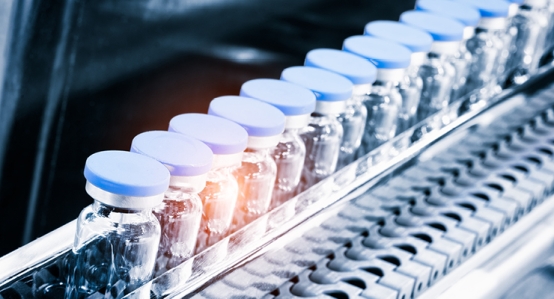Next-Generation Biopharma Production Methods
Recent innovations in biopharmaceutical production are reshaping how therapies are designed, manufactured, and distributed, delivering improvements in efficiency, product quality, and patient outcomes.
Recent innovations in biopharmaceutical production are reshaping how therapies are designed, manufactured, and distributed, delivering improvements in efficiency, product quality, and patient outcomes.

Breakthroughs in Cell Culture Systems
Advances in cell culture technology have significantly boosted production potential. Techniques like fed-batch and perfusion enable greater yields of biologics while maintaining higher purity levels. By carefully managing variables such as temperature, pH, and nutrient supply, manufacturers achieve faster production at reduced costs. Continuous processing allows real-time oversight and adjustments, ensuring both consistency and efficiency in delivering top-quality biologics.
Single-Use Systems (SUS)
The introduction of single-use bioreactors and disposable tools has revolutionized manufacturing by reducing contamination risks and cutting down on cleaning demands. These systems offer flexibility, shorten setup times, and support rapid scalability. They also make it possible for smaller biotech firms to enter the market without massive infrastructure investments, fostering greater innovation across the industry.
Role of Automation and Artificial Intelligence
Automation combined with AI is becoming integral to modern biopharma operations. Intelligent platforms can process vast data sets instantly, enabling workflow optimization and predictive equipment maintenance. Robotics handle repetitive processes, allowing specialized staff to focus on analysis and innovation. Together, these technologies increase reliability, minimize waste, and enhance production safety.
Evolving Quality Control Standards
Quality testing has advanced through methods like mass spectrometry and chromatography, enabling detailed product analysis. High-throughput screening supports rigorous quality assurance, ensuring regulatory compliance and consistency. These advancements strengthen trust among healthcare providers and patients while securing delivery of safe, effective biologics.
Expanding Use of DNA and RNA Technologies
DNA- and RNA-driven techniques are redefining drug development. mRNA platforms, proven effective during the COVID-19 pandemic, have demonstrated the speed at which new therapies can be produced. Likewise, progress in gene therapy is opening treatment possibilities for conditions once considered untreatable, paving the way for highly personalized medicine.
Moving Toward Sustainable Manufacturing
Sustainability is becoming a cornerstone of biopharma production. Companies are adopting renewable energy sources, reducing water use, and cutting waste. Circular economy practices—where waste is repurposed as raw input—are gaining momentum. These environmentally conscious strategies also reduce costs and boost long-term competitiveness.
Industry and Healthcare Impacts
The integration of these advancements is driving major changes in how biopharma companies operate and how patients receive care. Improved efficiency, affordability, and product quality are leading to more adaptive, data-driven, and patient-focused approaches. As technology evolves, agility, sustainability, and precision will define the industry’s future.
Looking Forward
Keeping pace with these breakthroughs is vital for stakeholders across healthcare. They highlight the expanding role of biopharmaceuticals in tackling global health challenges. Organizations such as the Biotechnology Innovation Organization (BIO) and the International Society for Pharmaceutical Engineering (ISPE) continue to provide critical updates on the latest innovations shaping this field.

